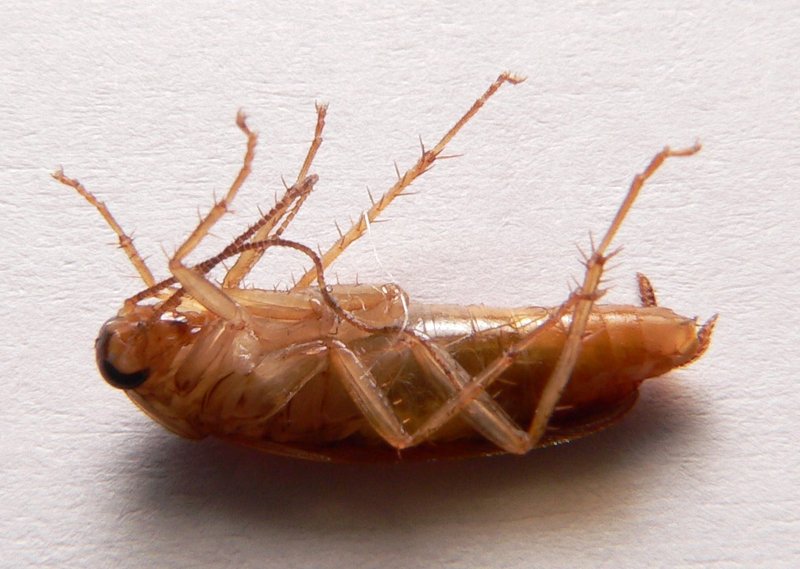ERROR : Server Busy(-1105)
ERROR : Server Busy(-1105)
German Cockroach (Blattella germanica) - Wiki
German cockroach
From Wikipedia, the free encyclopedia
[Photo] German Cockroach (Blattella germanica). Copyright ?? 2007 David Monniaux (http://commons.wikimedia.org/wiki/User:David.Monniaux)
The German cockroach or Croton bug (Blattella germanica) is a small species of cockroach, measuring about 1/2" to 5/8" (1.3 cm to 1.6 cm) long. It is tan to light brown, and has two dark parallel streaks running from the head to the base of the wings. Although it has wings, it is unable to sustain flight.
The German cockroach is one of the most common and prominent household cockroaches in the world, and can be found throughout many human settlements in the world. In particular, these insects are particularly fond of inhabiting restaurants, food processing facilities, hotel rooms, and nursing homes. In colder climates, it is found only near human habitats, since it is not very tolerant towards the cold. The German cockroach is originally from Asia and very common in Russia, not in Germany, and it is also very closely related to the Asian cockroach, to the extent that to the casual observer they appear nearly identical and may be mistaken for the other.
The German cockroach is very successful at establishing a niche in buildings, and is very hardy and resilient towards attempts to exterminate them. This is due to the fact they produce a large number of nymphs for each egg case, that there is a short period between birth and sexual maturity, and their ability to easily hide due to their small size. The mother also carries the egg case with her during the germination period, rather than depositing it like other species, a practice which would leave them vulnerable in a human habitat against zealous attempts to wipe them out. This cockroach is also smaller than many other species so it can more easily hide and fit into very small cracks and crevices to evade humans. The German cockroach, discounting the presence of pets, has few natural predators inside a human habitat.
The German cockroach is omnivorous. They particularly like starch, sugary foods, grease and meats. In certain situations where there is a shortage of foodstuffs, they will even turn cannibalistic, often chewing on the wings and legs of each other. This cockroach can be seen in the day occasionally, especially if there is a large population or if they have been disturbed. However, sightings are most commonly reported in the evening hours as they are nocturnal and therefore most active at night.
http://en.wikipedia.org/wiki/German_cockroach
| The text in this page is based on the copyrighted Wikipedia article shown in above URL. It is used under the GNU Free Documentation License. You may redistribute it, verbatim or modified, providing that you comply with the terms of the GFDL. |
|

